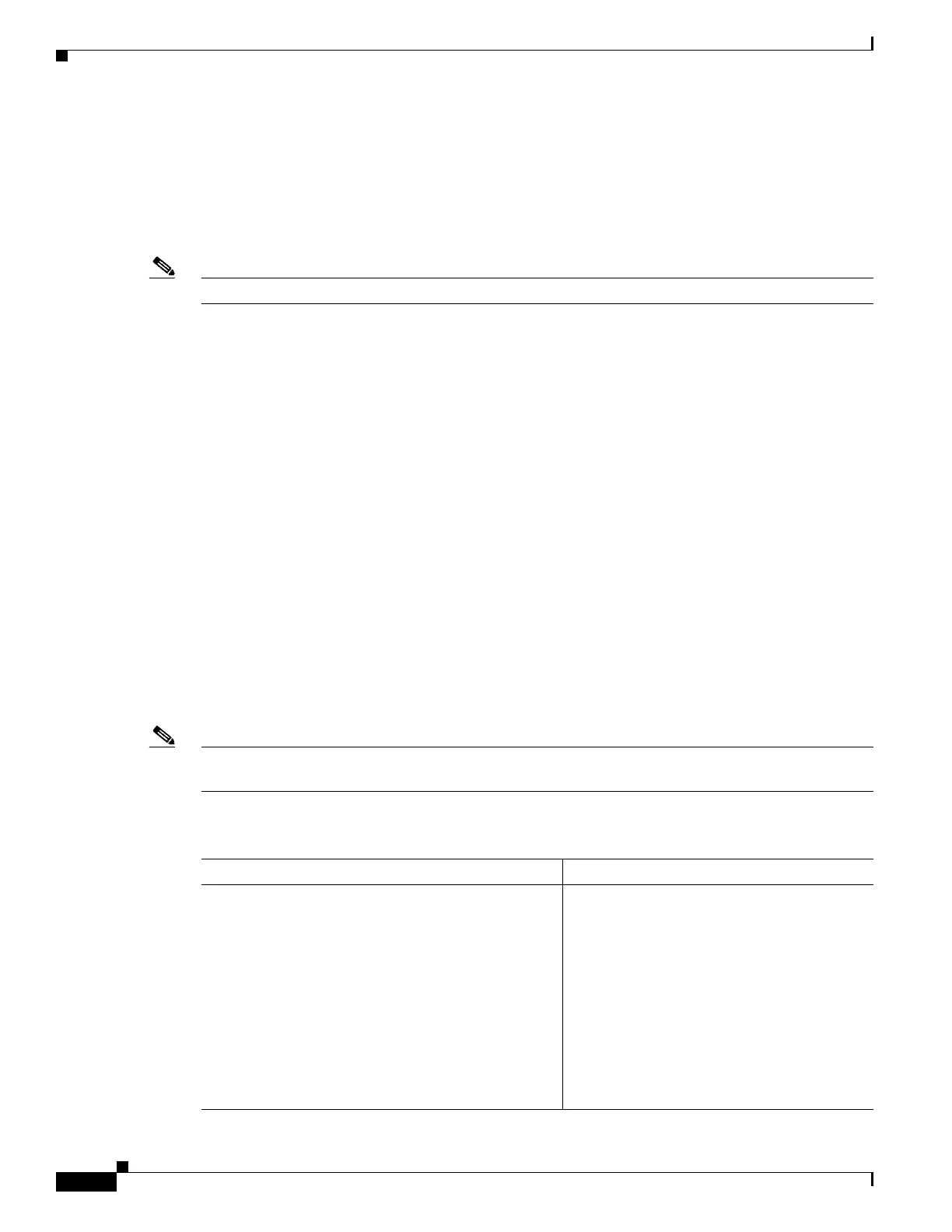66-12
Catalyst 4500 Series Switch, Cisco IOS Software Configuration Guide - Cisco IOS XE 3.9.xE and IOS 15.2(5)Ex
Chapter 66 Configuring SPAN and RSPAN
Encapsulation Configuration
Encapsulation Configuration
When configuring a SPAN destination port, you can explicitly specify the encapsulation type used by
the port. Packets sent out the port are tagged in accordance with the specified mode. (The encapsulation
mode also controls how tagged packets are handled when the ingress packet option is enabled.) The
Catalyst 4500 series switch supervisor engines support 802.1q encapsulation and untagged packets.
Note Only 802.1q encapsulation is supported.
The “replicate” encapsulation type (in which packets are transmitted from the destination port using
whatever encapsulation applied to the original packet) is not supported. If no encapsulation mode is
specified, the port default is untagged.
Ingress Packets
When ingress is enabled, the SPAN destination port accepts incoming packets (potentially tagged
depending on the specified encapsulation mode) and switches them normally. When configuring a SPAN
destination port, you can specify whether the ingress feature is enabled and what VLAN to use to switch
untagged ingress packets. Although the port is STP forwarding, it does not participate in the STP, so use
caution when configuring this feature lest a spanning-tree loop be introduced in the network. When both
ingress and a trunk encapsulation are specified on a SPAN destination port, the port goes forwarding in
all active VLANs. Configuring a non-existent VLAN as an ingress VLAN is not allowed.
By default, host learning is disabled on SPAN destination ports with ingress enabled. The port is also
removed from VLAN floodsets, so regular traffic is not switched out of the destination port. If learning
is enabled, then traffic for hosts learned on the destination port is switched out the destination port. A
host connected to the SPAN destination port will not receive broadcast ARP requests and will not
respond. You can also configure static host entries (including a static ARP entry and a static entry in the
MAC-address table) on SPAN destination ports.
Note This configuration does not work if the SPAN session does not have a source configured; the session is
half configured with only the SPAN destination port.
To configure ingress packets and encapsulation, perform this task:
Command Purpose
Switch(config)# [no] monitor session
session_number destination interface interface
[encapsulation {dot1q}] [ingress [vlan
vlan_IDs] [learning]]
Specifies the configuration of the ingress
packet and the encapsulation type of the
destination port.
For session_number, specifies the session
number identified with this SPAN session (1
through 6).
For interface, specifies the destination
interface.
For vlan_IDs, specifies the destination VLAN.
Use the no keyword to restore the defaults.

